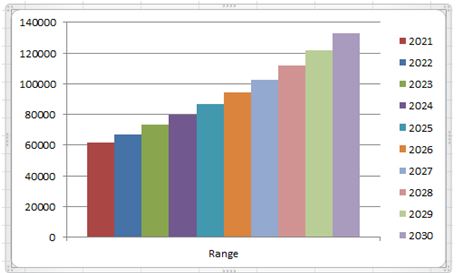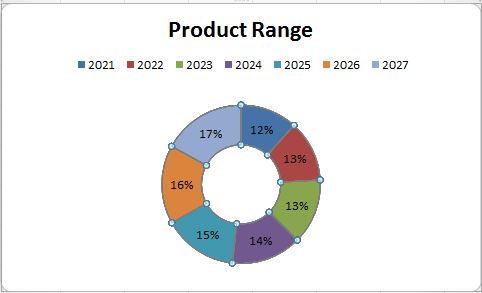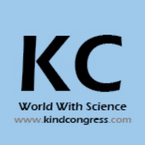Theme: Theme: Your skin- a mirror of your inner health
COSMETIC DERMA CONGRESS 2023
Conference series is gratified to welcome you to be a part of a webinar “6thWorld Cosmetic and Dermatology Congress” scheduled during September 29, 2023. This COSMETIC DERMA CONGRESS 2023 conference will focus on the theme “Your skin- a mirror of your inner health” that provides an excellent platform and opportunity to discuss the about the leading researches, developments, and challenges within the field of Dermatology and cosmetics and spread the most recent progressions in Allergy restoration and prevention. Conference will explore the advances in dermatology World cosmetic and dermatology Congress 2023 invites delegates and participants from across all continents. Conference will explore the advances in dermatology. Dermatology establishments are creating the conference for an ideal platform to share expertise, collaborate across and to assess rising technologies across the world. This conference could be an exceptional event that brings along novel and international dermatologists from leading universities.
Cosmetic Dermatology conference mainly deals with the research, diagnosis and treatment of conditions related to skin, hair, and nails. Dermatologists are medical doctors who trained in this area for many years. Disorders of skin, hair and nails fall within the area of a dermatology. This branch is divided broadly into medical and surgical fields. Cosmetic and Dermatology Congress focuses on skin cancer, skin diseases, Allergy symptoms, Dermatological diseases, Clinical dermatology and Cosmetic dermatology. In the recent time the research in dermatology reached to another height which comprises clinical research, Research techniques for diagnosis of the dermatological diseases and new therapy and deliver treatment.
Why to attend the conference?
6th World Cosmetic and Dermatology Congress provides a platform for researchers and decision makers in Dermatology field to present their latest findings and learn about all the important developments in dermatology and Cosmetic field. The increasing demand for the dermatology service is due to various Allergic disorders, skin cancer and most importantly the cosmetic surgery.
Target Audience:
- Dermatologists, oncology dermatologists
- Cosmetologists
- Venereologists & trichologists
- Aestheticians, paramedical aestheticians
- Tonsorial artists
- Skin specialists & health experts
- Scientists involved in research of dermatology and related fields
- Students and upcoming researcher of medicine disciplines
- Pharmacists & pharmacologists
- Health care systems and hospitals
- Associations and societies of dermatology and aesthetic medicine
- Directors of cosmetics companies and clinics
- Entrepreneurs & business delegates
- Professors and other academic professionals
Track 1: Clinical and Cosmetic Dermatology
Dermatology deals with the skin, hair, and nails of a personal. clinical medical specialty could be a speciality of medication that consists of a whole vary of diseases and conditions of the hair, nails, and skin of the patient. Dermatologists area unit professionals United Nations agency appraise and treat patients full of malignant and benign disorders touching these external areas of the body. Clinical dermatologists area unit consultants within the medical and surgical procedure of patients that suffer from varied skin, nails, and hair conditions and diseases. Clinical medical specialty encompasses all skin disorders and diseases similarly because the manifestations that occur within the skin however that originate in another a part of the body. Cosmetic medical specialty could be a specialised field of medical specialty that focuses on procedures that improve look of the skin, notably on the face and neck. it's conjointly called aesthetic medical specialty or aesthetic medication.
- Cosmetic procedures, Dermal Fillers
- Cosmetic Inventions, Microdermabrasion, Chemical peels
- Acne & acne scars
- Nonsurgical cosmetic procedures
- Nonsurgical fat reduction
- Photo rejuvenation
Track 2 : Skin care Cosmetics
The purposes of skin care cosmetics used in cleansing the skin, preserve the skin's wet balance, stimulate skin metabolism, and shield the skin from harmful ultraviolet. Skin care cosmetics contain substances that change the skin to operate properly. Skin care is at the interface of cosmetics and medicine. The United States of America Federal Food, Drug, and Cosmetic Act defines cosmetics as merchandise supposed to cleanse or beautify (for instance, shampoos and lipstick). the utilization of beautifying agents with alert there's probability of less facet effects as an alternative it's going to cause harmful impacts. fungous skin infections may cause by differing types of fungi and might be a typical offender of unquiet skin. Fungi invade and grow in dead layer of the skin.
Track3: Treatments and Trends in Cosmetics
Several elementary dermatological treatments square measure administered as workplace methods to check for a large vary of diseases or to treat trivial dermatological maladies or conditions during a speedy and non-invasive approach. Whereas, some procedures square measure dextrously designed for cosmetic enhancements and partitioning medical specialty problems. It includes treatment of scars, wrinkles, moles, excessive fat, unwanted hair, and skin discoloration. surgical process, rhytidectomy, and cosmetic surgery square measure a section of surgical aesthetic procedures. surgical procedures: liposuction, facelifts, breast implants, frequency ablation. Non-Surgical procedures: frequency skin adjustment, non-surgical liposuction, chemical peel.
- Waterless Cosmetics.
- CBD Skin Care.
- Microbiome Skincare.
- Fermented Beauty Products.
- Makeup in Metaverse – AR/VR Beauty.
- Blue light sunscreen.
Track 4: Current Research in Dermatology and Cosmetology
Skin is a largest organ that gives itself to clinical analysis as a result of it's visible and accessible, therefore quite easy to aim and do sampling. the stress of analysis got to be to develop a brand new level of understanding during this terribly important space of health science which can modify U.S. to use the newest discoveries into the manifestations and causes of dermatologic diseases and Cosmetics. In recent times, the analysis in drugs has reached nice heights that involves basic science analysis, clinical analysis, new ways to diagnose diseases and deliver treatment.
- Cutaneous Lymphoma
- Anti-ageing
- Organic and Toxin-free Beauty Products
- Aesthetic Research
- Skin Regeneration
- Wound Research
- Pediatric Research
Track 5: Cosmetic Dentistry
Cosmetic dentistry term refers, dental work which improves the appearance of teeth and gums. It primarily focuses on improvement of dental aesthetics in colour, position, shape, size, alignment and overall smile appearance. Cosmetic dentists should have specific education, specialty, training, and experience in this field. Cosmetic dentistry is mostly used for aesthetic purposes. Treatments like dental bonding, fix worn edges or hairline fractures helps to reduce the wear of the vulnerable areas. It is important to select the right dentist to perform the cosmetic dental surgery. cosmetic dentistry involves The addition of a dental material to teeth or gums – bonding, porcelain veneers (laminates), crowns (caps), gum grafts The removal of tooth structure or gums.
- Veneers
- Tooth Trimming
- Fake teeth
- Dental implants
- Braces
Track 6: Dermatological pharmacology & Green Cosmetology
Dermatological pharmacology deals with the basic pharmacology of the drugs used in skin disorders. Drugs applied to skin diffuse from the stratum conium through epidermis and dermis, to enter the capillary microcirculation and systemic circulation Topical dermatological agents are applied directly on the skin to treat skin conditions. They may deliver medicines to prevent or treat skin disorders or have inert creams and ointments for routine skin care to maintain the skin, which may be susceptible to skin disorders.
Green cosmetics, squalane of natural origin is preferred to its synthetic equivalent, with a choice being made from a plant source. To go further, the methods of cultivating the plants that go into the composition of squalane are also important. What you want to look for is something that has compostable, easily recyclable, refillable, or reusable packaging—or better yet, no packaging,” says Piper. In terms of plastic alternatives, Jhánneu tends to look for more sustainable and easily recyclable materials, like aluminum, bamboo, and glass. Most Popular.
- Bio-based chemicals
- Natural Oils and extracts
- Cutaneous drug delivery
- Biological agents and new Organic therapies
- Pharmacology and therapeutic uses in dermatology
Track 7: Dermatological investigations
A thorough history and examination are needed to help identify allergy-related dermatological conditions, even then it may not always be possible to identify the precise allergen. Dermatological investigations and developments to diagnose and test skin disorders. In the growing world, researchers are developing several methods to cure dermatological disorders.
- Imaging techniques, tele Dermatology
- Current Research
- Advances in Skin and Wound Care
- Bio Materials in Cosmetology Surgery
- Drugs, Therapies and their Side Effects
- Dermoscopy & Biopsy
- Laser technology in Dermatology
Track 8: Neonatal and Pediatric Dermatology
The neonatal period is defined as the first 30 days of life. Neonatal skin diseases evolve much more rapidly than adult skin diseases, and some conditions that initially appear to be serious turn out to be trivial, whereas in others, the opposite is true. Dermatology cannot be separated from internal medicine, pediatric dermatology is inseparable from general pediatrics. Since most dermatologists have experience and training in internal medicine but less exposure to pediatrics and neonatology, an introduction to the special issues that can arise in pediatric dermatology is presented herein. As it is impossible to discuss all of pediatric dermatology.
- Axillary Hyperhidrosis
- Thalidomide
- Measles
- Harlequin ichthyosis (born with hard, thick skin)
- Diaper Rash
- Infantile Dermatitis
Track 9: Cosmetic surgery
Cosmetic surgery is a unique discipline of medicine focused on enhancing appearance through surgical and medical techniques. Cosmetic surgery can be performed on all areas of the head, neck and body. Because treated areas function properly but lack aesthetic appeal, cosmetic surgery is elective. It is where a person chooses to have an operation, or invasive medical procedure, to change their physical appearance for cosmetic rather than medical reasons. Non-surgical cosmetic procedures, such as Botox and dermal fillers - typically used to relax or fill crease lines - do not involve surgery.
- Plastic and Reconstructive Surgery
- Endoscopic surgery
- Flap surgery
- Laser surgery
- Skin graft
- Tissue expansion
- Dermatosurgery
Track 10: Venereology and Infectious Skin Diseases
Venereology is the branch of medicine dealing with the diagnosis and treatment of sexually transmitted diseases, which may be from bacterial, viral, fungal, or parasitic origins. These can be caused by bacteria, viruses, parasites or fungi, but almost always via the skin, which is why venereology is also considered part of dermatology. The most common diseases here are syphilis, gonorrhoea and the pubic louse. HIV infections are also treated by dermatologists and venereologists. Common skin infections include cellulitis, erysipelas, impetigo, folliculitis, and furuncles and carbuncles. Cellulitis is an infection of the dermis and subcutaneous tissue that has poorly demarcated borders and is usually caused by Streptococcus or Staphylococcus species.
- Psoriasis
- Allergy and atopic dermatitis
- Pruritus
- Hidradenitis suppurativa
- Hemangioma
Track 11: Genodermatoses: Genetics of Skin
Genodermatosis is a hereditary skin disease with three inherited modes including single gene inheritance, multiple gene inheritance and chromosome inheritance. There are many different types of genodermatosis, the prevalence of genodermatosis ranges from 1 per 6000 people to 1 per 500,000 people. Genodermatosis influence on the texture, color and structure of skin cuticle and connective tissue, specific lesion site and clinical manifestations on the body vary depending on the type.
- Single gene (monogenic)
- Multiple gene (polygenic)
- Chromosome
- Epidermolysis bullosa
- Pachyonychia congenita
- Epidermolytic hyperkeratosis
Track 12: Laser therapy in Dermatology and Cosmetology
The first lasers used to treat skin conditions occurred over 40 years ago. Argon and carbon dioxide (CO2) lasers were commonly used to treat benign vascular birthmarks such as port-wine stains and haemangiomas. Although these birthmarks could be effectively lightened, a side effect was the unacceptably high rate of scar formation. The surgical precision serves to remove damaged areas of skin layer-by-layer, eventually boosting the levels of collagen production that helps build-up of the new, clear tissues of skin. The accuracy and precision of lasers continue to be among the most favored advantages of cosmetic laser treatment
Lasers have been used successfully to treat a variety of vascular lesions including superficial vascular malformations (port-wine stains), facial telangiectases, haemangiomas, pyogenic granulomas, Kaposi sarcoma and poikiloderma of Civatte.
- Ablative and Non-Ablative Lasers
- The Power of Laser Pulse
- Comparing Ablative CO2 and Erbium Lasers
- Laser Wavelength Absorption
- New Fractionated Technology
Track 13: Nanotechnology in Cosmetics & Skin Care
Nanotechnology incorporation in cosmetic formulation is considered as the hottest and emerging technology available. Cosmetic manufacturers use nanoscale size ingredients to provide better UV protection, deeper skin penetration, long-lasting effects, increased color, finish quality, and many more. The cosmetic industry is attaining the benefits of nanotechnology by developing nanoparticles for the enhanced performance and bioavailability of active components in cosmetics, sunscreens, anti-aging creams, moisturizers, and perfumes.
- Dry nanotechnology
- Wet nanotechnology
- Nanotechnolgy in the future
- Lipid nanoparticles
Track 14: Trichology, Hair and scalp treatment
Trichology focuses on treating the hair from the inside-out. A healthy scalp begins with a healthy body. The most widely known conditions treated with Trichology are: Telogen Effluvium, Alopecia Areata, Androgenetic Hair Loss, Traction Alopecia, Psoriasis, Seborrheic Dermatitis, Pityriasis (dandruff). Best for Dandruff: Nioxin Scalp Recovery Serum Soothing Serum. Best for Itchy Scalp: Briogeo Scalp Revival Charcoal Tea Tree Cooling Hydration Mask for Dry, Itchy Scalp. Best for Inflammation: Hairstem DHT Blocker Hair Growth Shampoo. Best for Buildup: OGX Extra Strength Refreshing Scalp Teatree Mint Scalp Treatment.
- Dry Scalp
- Hair transplant
- Follicular Unit Extraction
- Malassezia
- Dandruff
- Conditioning Treatments
- Scalp Massage
- Probiotics
Track15: Immunodermatology and Dermatopathology
The analysis of immunologic phenomena as they affect skin disorders and their treatment or prophylaxis. Immunodermatology studies skin as an organ of immunity in health and disease. Several areas have special attention, such as photo-immunology (effects of UV light on skin defense), inflammatory diseases such as Hidradenitis suppurativa, allergic contact dermatitis and atopic eczema, presumably autoimmune skin diseases such as vitiligo and psoriasis, and finally the immunology of microbial skin diseases such as retrovirus infections and leprosy. Dermatopathology is a subspecialty of pathology. Pathology is the study of diseases. It includes the study of the causes, course and progression and the complications that arise from the disease.
Track16: Psoriasis
Psoriasis is a chronic autoimmune condition that affects the skin, causing inflammation and the development of red, scaly patches. These patches can appear anywhere on the body, but are most commonly found on the scalp, elbows, knees, and lower back.
Psoriasis is caused by an overactive immune system that mistakenly attacks healthy skin cells, causing them to grow too quickly. This rapid growth leads to the formation of thick, scaly patches on the skin. Psoriasis can be triggered by a variety of factors, including stress, infections, certain medications, and cold weather. It can also be genetic, and tends to run in families.
There are several different types of psoriasis, including
- Plaque psoriasis
- Guttate psoriasis
- Inverse psoriasis
- Pustular psoriasis
- Erythrodermic psoriasis
The most common type is plaque psoriasis, which accounts for about 80% of cases.
The global dermacosmetics market
The wold wide dermacosmetics market was raged at $61,625.8 million in 2021, and it is estimated to reach $132,743.5 million by 2030, enlarge at a CAGR of 8.9% from 2021 to 2030. The growth of the industry can be mainly attributed to the surging purchasing ability of consumers, the increasing inclination toward spending on appearance, the growing prevalence of skin diseases, and the rising number of conferences to increase awareness of dermacosmetics. The rising customer spending on beauty and looks and the growing focus on online purshasing are driving the market. Consumers are more concerned with their appearance these days since it enhances their confidence. Therefore, people are increasingly opting to spend more in skin protection and radiance by using these products to minimize the indication of aging, wrinkles, acne, and fine lines. Also, with the increase in household disposable gains, the purchasing ability of people has increased, leading to their increasing inclination to have healthy skin, by using beauty product, such as creams, lotions, toners, and serums.
The skincare sub-segment is anticipated to have a lesser market share and generate a range of profit $80,894.5 million by 2030, growing from $32,196.4 million in 2021. The global skin care products market size was valued at USD 130.50 billion in 2021 and is expected to expand at a compound annual growth rate (CAGR) of 4.6% from 2022 to 2030. Escalating demand for face creams, sunscreens, and body lotions across the globe is expected to have a positive impact on the market growth over the forecast period. Moreover, the flourishing e-commerce sector is anticipated to boost market grow further. Personalized products have been gaining traction among consumers worldwide. With the increasing consumer inclination toward natural beauty items, the concept of creams, serums, and moisturizers exchange with natural ingredients is expected to witness significant demand over the coming period. Such products are considered to be more effective and have few or no side effects, which, in turn, is expected to increase their application among users.
Bio-based Products in the Cosmetics Industry: Global Markets
The global bio-based products in cosmetics market should reach $7.4 billion by 2022 and more than $10.5 billion by 2027, with a compound annual growth rate (CAGR) of 7.1% during the forecast period of 2022-2027. According to a market research study published by Facts and Factors, the demand analysis of Global Bio-Based Materials Market size & share revenue was valued at approximately. The key market players are profiled in the report with their sales, revenues and strategies. “Bio-Based Materials Market By Type (Bio-Polycarbonate, Bio-Based Polyethylene (PE), Bio-Based Polyethylene terephthalate (PET), and Others), By Application (Rigid Packaging, Electrics and Electronics, Automotive and Transport, Flexible Packaging, Consumer Goods, and Others), And By Regions – Global & Regional Industry Perspective, Comprehensive Analysis, and Forecast.
Associations around the World
- National Institutes of Health
- European Academy of Dermatology and Venereology
- Asian Dermatological Association Ltd
- Canadian Dermatology Foundation
- Statistical Analysis of Association
- American Academy of Cosmetic Family Medicine
- American Osteopathic College of Dermatology
- Aesthetic Association
- The Greek Association of Dermatologic Surgery
- Spanish Society of Cosmetic Surgery and Medicine
- British Medical Laser Association
- Argentinian Association of Dermatology
- Hong Kong Association of Cosmetic Surgery
- Canadian Association of Wound Care
- International Committee for Dermatopathology
- Canadian Medical Protective Association
- International transplant skin cancer collaborative
- Canadian skin patient Alliance
- American Telemedicine Association (ATA)
- Canadian Dermatology Association
- American Board of Dermatology
- Asian Dermatological Association Ltd
- Korean Dermatological Association
- Association of professors of Dermatology
- Pacific Dermatologic Association
- Colombian Association of Dermatology
- Hellenic Association of Dermatology and Venereology
- Irish Association of Dermatologists
- Association of Italian Clinical Dermatologists
- Italian Association of Hospital Dermatologists
- Japanese Dermatological Association
Major Cosmetic and Dermatology Societies around the World
- Society for Clinical and Medical Hair Removal
- Society of Plastic Surgical Skin Care Specialists
- The Society of Permanent Cosmetic Professionals
- Society for Cutaneous Ultrastructure Research
- Argentina Society of Dermatology
- Austrian Society for Dermatology and Venereology
- Chilean Society of Dermatology and Venereology
- Danish Dermatological Society
- French Society of Dermatology
- French Society of Dermatological Research
- German Dermatological Society
- Italian Society of Surgical Oncology and Oncological Dermatology
- Italian Society of Dermatology
- Japanese Society of Anti-Aging Medicine
- World Trichology Society
- International Society of Hair Restoration Surgery
- New Zealand Dermatological Society
- Swiss Society of Dermatology and Venereology
- Turkish Society of Dermatopathology
- American Society for Dermatologic Surgery
- American Society of Dermatology
- American Society for Laser Medicine and Surgery
- Asian Society for Pigment Cell Research
- Australasian Dermatopathology Society
- Austrian Society of Dermatology and Venereology
- Brazilian Society of Dermatology
- British Society for Dermatological Surgery
- Cosmetic Dermatology Society of India
- European Nail Society
- European society for cosmetic and Aesthetic Dermatology
- European Society of Contact Dermatitis
- International Society for Dermatologic Surgery
- International Society of Dermatology
- International Society for Skin Imaging
- Pan American Society for Pigment Cell Research
- Latin American Pediatric Dermatologic Society
- Society for Investigative Dermatology
Top Cosmetic and Dermatology Universities around the Globe
- New York University
- University of Pennsylvania
- Emory University
- Columbia University
- University of Pittsburgh
- Johns Hopkins Medical Institution
- Florio Beauty Academy
- Toronto Cosmetic Clinic
- Paramita Academy of Makeup
Major Cosmetic and Dermatology related Companies
- Skin Kind Limited
- Regeneron Pharmaceuticals, Inc
- Dermal Life
- Dermatology Alliance, Patch Testing Centers of Excellence
- Dermatology Associates of Concord
- Galderma
- Johnson & Johnson
- AbbVie
- GSK
- Pfizer
- LEO Pharma
- Apothecus Pharmaceutical Corp
- Remedi Pharmaceuticals
- Abgenix, Inc.
- Abbott Laboratories
- Acadia Pharmaceuticals
- Active Pass Pharmaceuticals
- Advanced Drug Delivery Technologies AG
Related Societies
USA and Canada: American Board of Dermatology; Skin Cancer Foundation; Argentine Society of Dermatology; International Society of Dermatopathology; Canadian Dermatology Association; Primary Care Dermatology Society of Canada; American Society for Dermatologic Surgery; American Society for Laser Medicine and Surgery; Asian Society for Pigment Cell Research; Pan American Society for Pigment Cell Research; Brazilian Society of Dermatology; Latin American Paediatric Dermatologic Society; European Nail Society; Danish Dermatological Society; German Dermatological Society; Italian Society of Surgical Oncology and Oncological Dermatology; Italian Society of Dermatology; French Society of Dermatology; French Society of Dermatological Research; European association of Dermato-oncology; Spanish Academy of Dermatology and Venereology.
Europe: Austrian Society for Dermatology and Venereology; European Nail Society; European society for cosmetic and Aesthetic Dermatology; European Society of Contact Dermatitis; Australasian Dermatopathology Society; Italian Society of Surgical Oncology and Oncological Dermatology; Italian Society of Dermatology; French Society of Dermatology; French Society of Dermatological Research; Finnish Dermatological Society; Australasian Dermatopathology Society; Austrian Society of Dermatology and Venereology; Turkish Society of Dermatopathology; Japanese Society of Anti-Aging Medicine; Cosmetic Dermatology Society of India; Society for Clinical and Medical Hair Removal.
Asia-Pacific: Cosmetic Dermatology Society of India; Society for Clinical and Medical Hair Removal; The Society of Permanent Cosmetic Professionals; Society for Cutaneous Ultrastructure Research; Asian Society for Pigment Cell Research; New Zealand Dermatological Society; Asian Dermatological Association Ltd; Korean Dermatological Association; Asian Academy of Dermatology and Venereology; Hong Kong Society of Dermatology and Venereology.
Middle East: The Japanese Dermatological Association; Chinese Society of Dermatology; International Society of Dermatology; Turkish Society of Dermatopathology; Emirates Dermatology Society; Jordanian Society of Dermatology and Venereology; Iranian Society of Dermatology; Israel Society of Dermatology and Venerology; Kuwait Society of Dermatologists; Oman Dermatology Society; Saudi Society of Dermatology and Dermatologic Surgery
Cosmetic Derma congress 2022 Report
We would like to thank all of our wonderful and eminent speakers, conference attendees who had shared their research knowledge and made Cosmetic Derma 2022 Conference as memorable and our best event ever!
5th World Cosmetic and Dermatology Congress, hosted by the Conference Series was held during November 17-18, 2022 London, UK, with the theme was "A Healthy Skin Assures Hearty Smile". The main ambition of Cosmetic Derma 2022 was to came up with an international program for Medicinal Researchers, Dermatologist, oncology Cosmetologists, Venereologists, trichologists.
Benevolent responed and activily participated by the Editorial Board Members of Conference Series Journals as well as from the Aestheticians, paramedical, Tonsorial artists, Skin specialists, health experts Nurses, Doctors, Pediatric Professors, Pharmaceutical Industries, Researchers and Students from Various fields of Cosmetic Derma congress 2022, who all are made the event grant success.
The meeting had presented on various sessions, in which they were disscussed on the following major scientific tracks:
- Neonatal and Pediatric Dermatology
- Cosmetic surgery
- Venereology and Infectious Skin Diseases
- Cosmetic dentistry
- Genodermatoses: Genetics of Skin
- Laser therapy in Dermatology and Cosmetology
- Nanotechnology in Cosmetics & Skin Care
- Types of Skin Conditions & Disorders, Psoriasis
- Trichology, Hair and scalp treatment
- Immunodermatology and Dermatopathology
- Skin Cancer, Melanoma, and Skin Malignancy Therapy
- Photodermatology and Melasma
- Cosmetic Dermatology & Clinical Dermatology
- Dermatoepidemiology
- Dermatological pharmacology & Green Cosmetology
- Case Reports in Dermatology Practise
- Cosmetics Regulation and policy
- Nutritional dermatology
Latest Technology in Medicine, the conference has initiated with a series of lectures delivered by both Honorable Guests and members of the Keynote forum.
With the grand success of Cosmetic Derma Congress 2022, Conference Series is proud to announce that 5th World Cosmetic and Dermatology Congress during November 17-18, 2022 London, UK
Let’s meet @ Cosmetic Derma Congress 2023
Conference Highlights
- Clinical and Cosmetic Dermatology
- Skin care Cosmetics
- Treatments and Trends in Cosmetics
- Current Research in Dermatology and Cosmetology
- Cosmetic Dentistry
- Dermatological pharmacology & Green Cosmetology
- Dermatological investigations
- Neonatal and Pediatric Dermatology
- Cosmetic surgery
- Venereology and Infectious Skin Diseases
- Genodermatoses: Genetics of Skin
- Laser therapy in Dermatology and Cosmetology
- Nanotechnology in Cosmetics & Skin Care
- Trichology, Hair and scalp treatment
- Immunodermatology and Dermatopathology
- Skin Cancer, Melanoma, and Skin Malignancy Therapy
- Dermatoepidemiology
- Cosmetics Regulation and policy
- Nutritional dermatology
- Psoriasis
To share your views and research, please click here to register for the Conference.
To Collaborate Scientific Professionals around the World
| Conference Date | September 29-29, 2023 | ||
| Sponsors & Exhibitors |
|
||
| Speaker Opportunity Closed | |||
| Poster Opportunity Closed | Click Here to View | ||
Useful Links
Special Issues
All accepted abstracts will be published in respective Our International Journals.
- Journal of Cosmetology & Trichology
- Journal of Clinical & Experimental Dermatology Research
- Journal of Aging Science
Abstracts will be provided with Digital Object Identifier by









